-
 Bitcoin
Bitcoin $117500
-0.66% -
 Ethereum
Ethereum $3760
-1.24% -
 XRP
XRP $3.087
-2.54% -
 Tether USDt
Tether USDt $0.9999
-0.01% -
 BNB
BNB $803.6
-4.03% -
 Solana
Solana $180.3
-4.15% -
 USDC
USDC $0.9998
-0.01% -
 Dogecoin
Dogecoin $0.2218
-4.92% -
 TRON
TRON $0.3366
3.71% -
 Cardano
Cardano $0.7785
-3.73% -
 Hyperliquid
Hyperliquid $42.90
-4.75% -
 Sui
Sui $3.797
-7.45% -
 Stellar
Stellar $0.4165
-2.32% -
 Chainlink
Chainlink $17.65
-4.17% -
 Bitcoin Cash
Bitcoin Cash $561.0
-3.86% -
 Hedera
Hedera $0.2611
-4.54% -
 Avalanche
Avalanche $24.33
-7.02% -
 UNUS SED LEO
UNUS SED LEO $8.972
0.06% -
 Litecoin
Litecoin $107.6
-2.79% -
 Toncoin
Toncoin $3.254
-1.84% -
 Shiba Inu
Shiba Inu $0.00001306
-4.69% -
 Ethena USDe
Ethena USDe $1.001
0.00% -
 Uniswap
Uniswap $10.10
-4.83% -
 Polkadot
Polkadot $3.902
-4.63% -
 Monero
Monero $315.1
-2.57% -
 Dai
Dai $1.000
0.02% -
 Bitget Token
Bitget Token $4.499
-2.53% -
 Pepe
Pepe $0.00001145
-7.38% -
 Cronos
Cronos $0.1479
6.07% -
 Aave
Aave $281.3
-4.07%
How to buy and sell CVX coins
To purchase CVX coins, you'll need to create an account on a cryptocurrency exchange that supports CVX trading, such as Binance, Coinbase, or Huobi, fund your account, find the CVX trading pair, and place a buy order.
Nov 23, 2024 at 12:24 am

How to Buy and Sell CVX Coins
Convex Finance (CVX) is a decentralized finance (DeFi) platform that optimizes Curve Finance's liquidity pools. CVX coin is the native token of Convex Finance. It is primarily used for governance and rewards distribution. Here's a comprehensive guide on how to buy and sell CVX coins.
Step 1: Create an Account on a Cryptocurrency Exchange that Supports CVX
Several reputable cryptocurrency exchanges support CVX trading, including Binance, Coinbase, and Huobi. Visit the website of your preferred exchange and create an account. You'll need to provide your personal information and undergo a KYC (Know Your Customer) process for verification.
Step 2: Fund Your Account with Your Preferred Deposit Method
Once your account is created, you need to deposit funds to purchase CVX coins. Most exchanges support multiple fiat currencies and popular cryptocurrencies like Bitcoin (BTC) and Ethereum (ETH). Choose the method that suits you and follow the instructions to make a deposit.
Step 3: Find the CVX Trading Pair
Navigate to the trading section on the exchange and search for the CVX trading pair. You will mostly find pairs such as CVX/USDT, CVX/BTC, or CVX/ETH. Select the pair that matches your preferred purchase currency.
Step 4: Place a Buy Order
In the trading interface, choose the 'Buy' option. Specify the amount of CVX tokens you want to buy or the amount you want to spend on the purchase. Select the order type (e.g., market order, limit order) and review the details before confirming your order.
Step 5: Wait for the Order to Fill
Depending on the market conditions and the order type you selected, your order may fill immediately or take some time. If the order fills, the CVX coins will be credited to your exchange account.
Step 6: Store Your CVX Coins Securely
Once you have purchased CVX coins, it's crucial to store them securely. You can store them on the exchange, but it's generally safer to use a hardware wallet for long-term storage.
How to Sell CVX Coins
Step 1: Transfer CVX Coins to the Exchange
If your CVX coins are not already on the exchange where you want to sell them, you need to transfer them from your wallet or another exchange. Copy the deposit address from the exchange and initiate a withdrawal of CVX coins from your previous platform.
Step 2: Find the CVX Trading Pair
Navigate to the trading section on the exchange and search for the CVX trading pair that matches your preferred withdrawal currency (e.g., CVX/USDT, CVX/BTC).
Step 3: Place a Sell Order
Choose the 'Sell' option on the trading interface and specify the amount of CVX tokens you want to sell or the amount you want to receive from the sale. Select the order type (e.g., market order, limit order) and review the details before confirming your order.
Step 4: Wait for the Order to Fill
Depending on the market conditions and the order type you selected, your order may fill immediately or take some time. If the order fills, the proceeds from the CVX sale will be credited to your exchange account.
Step 5: Withdraw Your Funds
Once your CVX coins have been sold, you can withdraw the funds to your bank account, a supported cryptocurrency wallet, or another exchange.
Disclaimer:info@kdj.com
The information provided is not trading advice. kdj.com does not assume any responsibility for any investments made based on the information provided in this article. Cryptocurrencies are highly volatile and it is highly recommended that you invest with caution after thorough research!
If you believe that the content used on this website infringes your copyright, please contact us immediately (info@kdj.com) and we will delete it promptly.
- Bitcoin Price Drop: Navigating the Dip with Corporate Strategies
- 2025-07-30 07:30:12
- BNB's Bullish Cycle: ChatGPT Weighs In on the Future
- 2025-07-30 06:50:12
- XRP's Wild Ride: Open Interest, Price Crash Fears, and What's Next
- 2025-07-30 07:50:12
- SEC Greenlights In-Kind Creations: A Game Changer for Bitcoin ETPs?
- 2025-07-30 07:50:12
- Arbitrum (ARB) Price Prediction: Navigating the Ups and Downs of the Best ETH Eco
- 2025-07-30 06:50:12
- Ethereum, Ruvi AI, Presale: The Next Big Thing in Crypto?
- 2025-07-30 07:30:12
Related knowledge
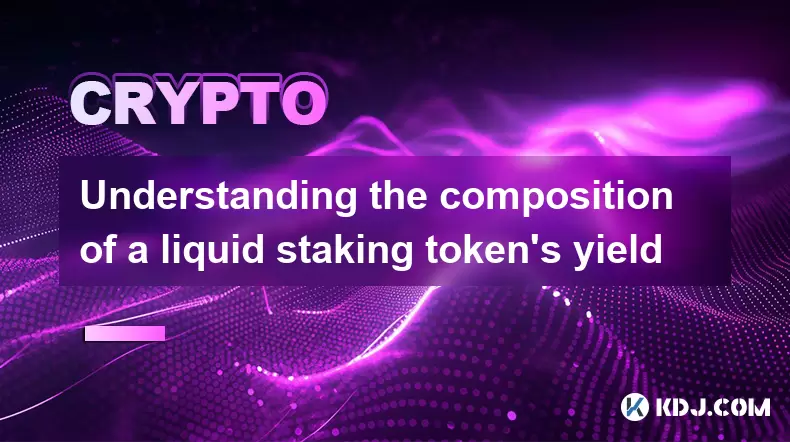
Understanding the composition of a liquid staking token's yield
Jul 20,2025 at 09:07am
What Is a Liquid Staking Token?A liquid staking token is a representative asset issued to users who stake their native cryptocurrency on a proof-of-st...
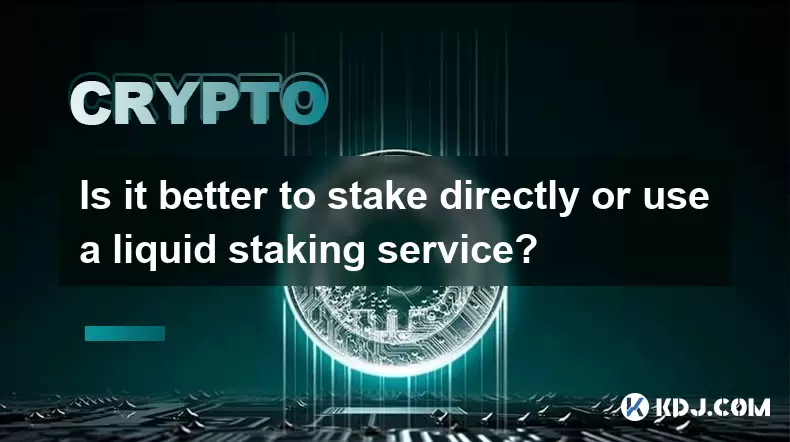
Is it better to stake directly or use a liquid staking service?
Jul 22,2025 at 08:21pm
Understanding the Basics of StakingStaking in the context of blockchain and cryptocurrency refers to the process of locking up digital assets to suppo...
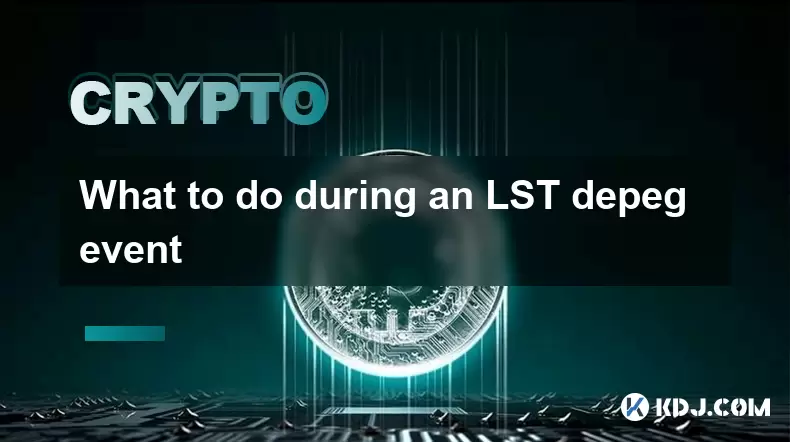
What to do during an LST depeg event
Jul 20,2025 at 04:57pm
Understanding LST Depeg EventsAn LST (Liquid Staking Token) depeg event occurs when the token, which is typically pegged to the value of the underlyin...
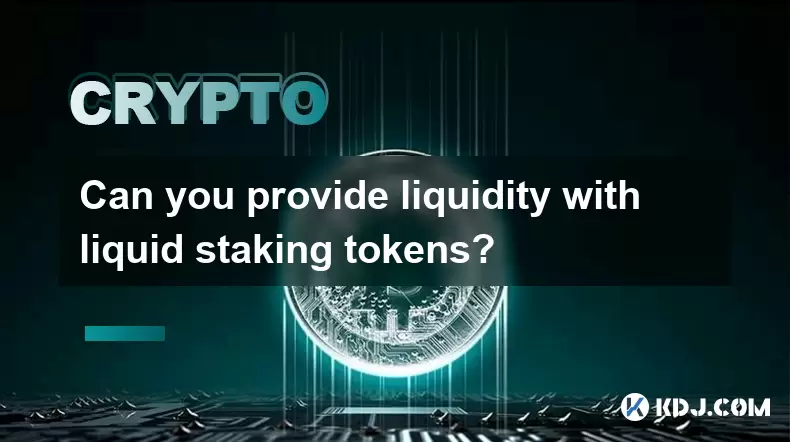
Can you provide liquidity with liquid staking tokens?
Jul 22,2025 at 10:22am
Understanding Liquid Staking TokensLiquid staking tokens (LSTs) are derivative tokens that represent staked assets on a proof-of-stake (PoS) blockchai...
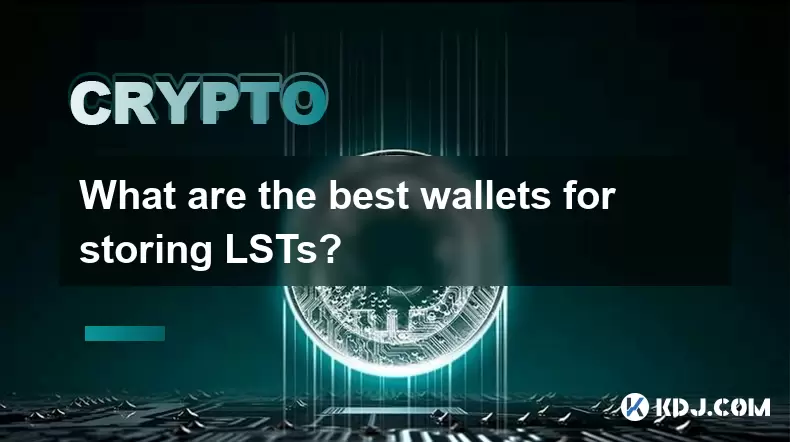
What are the best wallets for storing LSTs?
Jul 21,2025 at 03:14pm
Understanding LSTs and the Need for Secure StorageLSTs, or Liquid Staking Tokens, are derivative tokens representing staked assets on a blockchain. Wh...
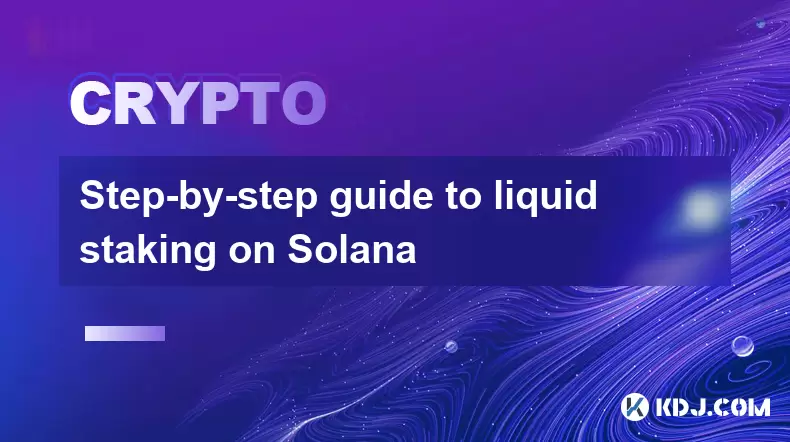
Step-by-step guide to liquid staking on Solana
Jul 20,2025 at 06:42am
What is Liquid Staking on Solana?Liquid staking is a mechanism that allows users to stake their cryptocurrency while retaining liquidity through the i...

Understanding the composition of a liquid staking token's yield
Jul 20,2025 at 09:07am
What Is a Liquid Staking Token?A liquid staking token is a representative asset issued to users who stake their native cryptocurrency on a proof-of-st...

Is it better to stake directly or use a liquid staking service?
Jul 22,2025 at 08:21pm
Understanding the Basics of StakingStaking in the context of blockchain and cryptocurrency refers to the process of locking up digital assets to suppo...

What to do during an LST depeg event
Jul 20,2025 at 04:57pm
Understanding LST Depeg EventsAn LST (Liquid Staking Token) depeg event occurs when the token, which is typically pegged to the value of the underlyin...

Can you provide liquidity with liquid staking tokens?
Jul 22,2025 at 10:22am
Understanding Liquid Staking TokensLiquid staking tokens (LSTs) are derivative tokens that represent staked assets on a proof-of-stake (PoS) blockchai...

What are the best wallets for storing LSTs?
Jul 21,2025 at 03:14pm
Understanding LSTs and the Need for Secure StorageLSTs, or Liquid Staking Tokens, are derivative tokens representing staked assets on a blockchain. Wh...

Step-by-step guide to liquid staking on Solana
Jul 20,2025 at 06:42am
What is Liquid Staking on Solana?Liquid staking is a mechanism that allows users to stake their cryptocurrency while retaining liquidity through the i...
See all articles

























































































